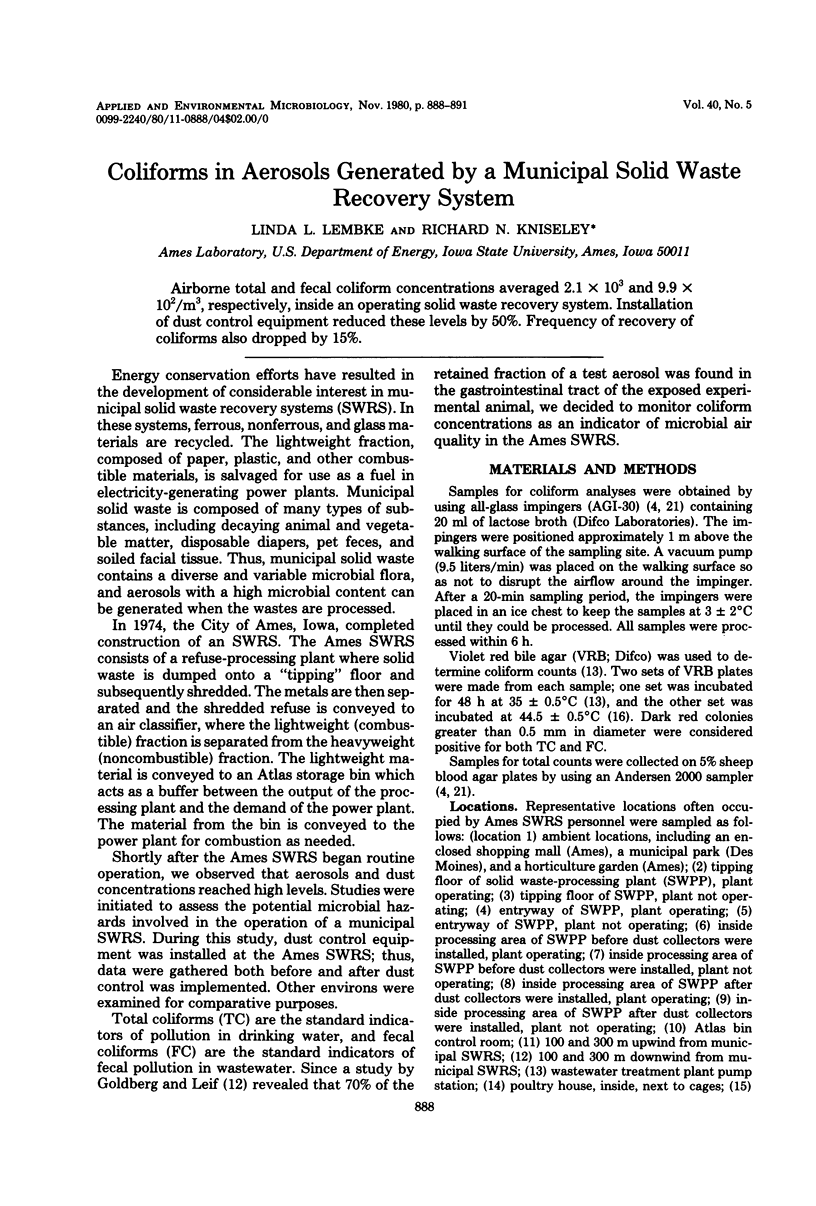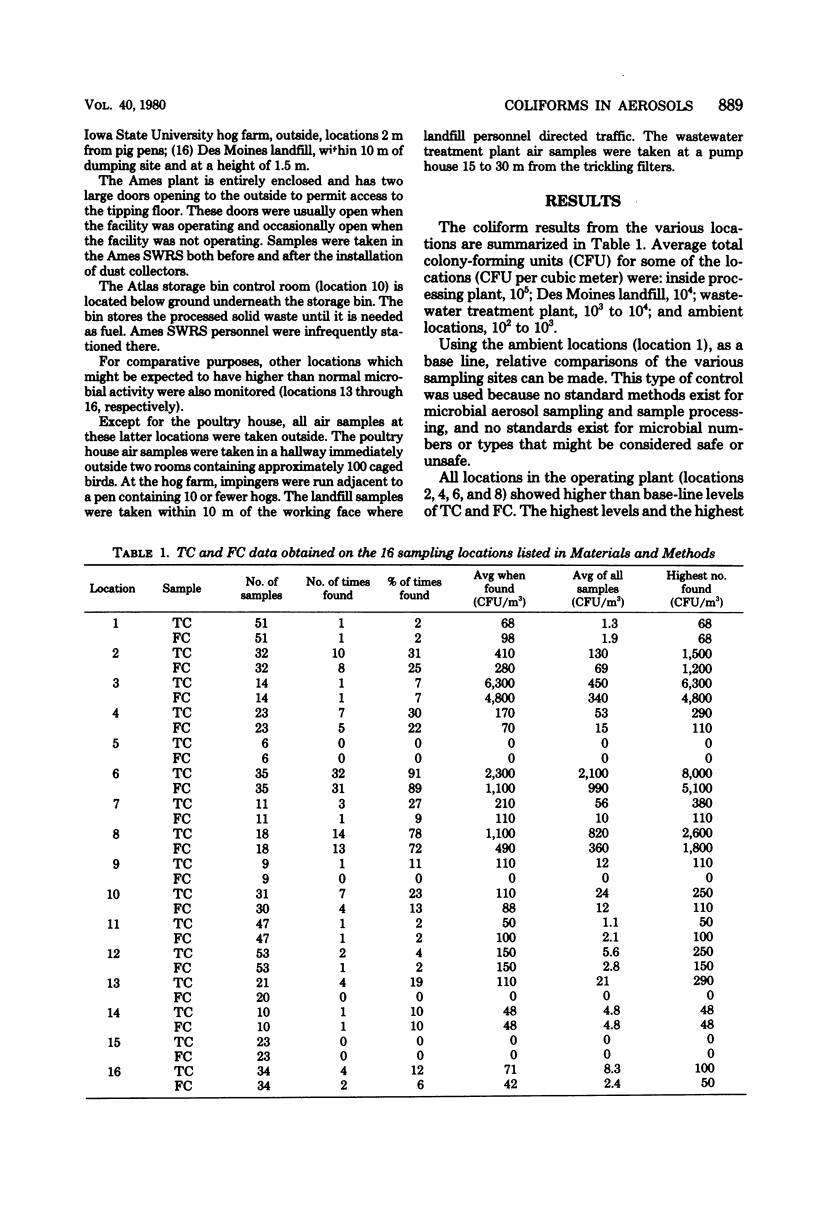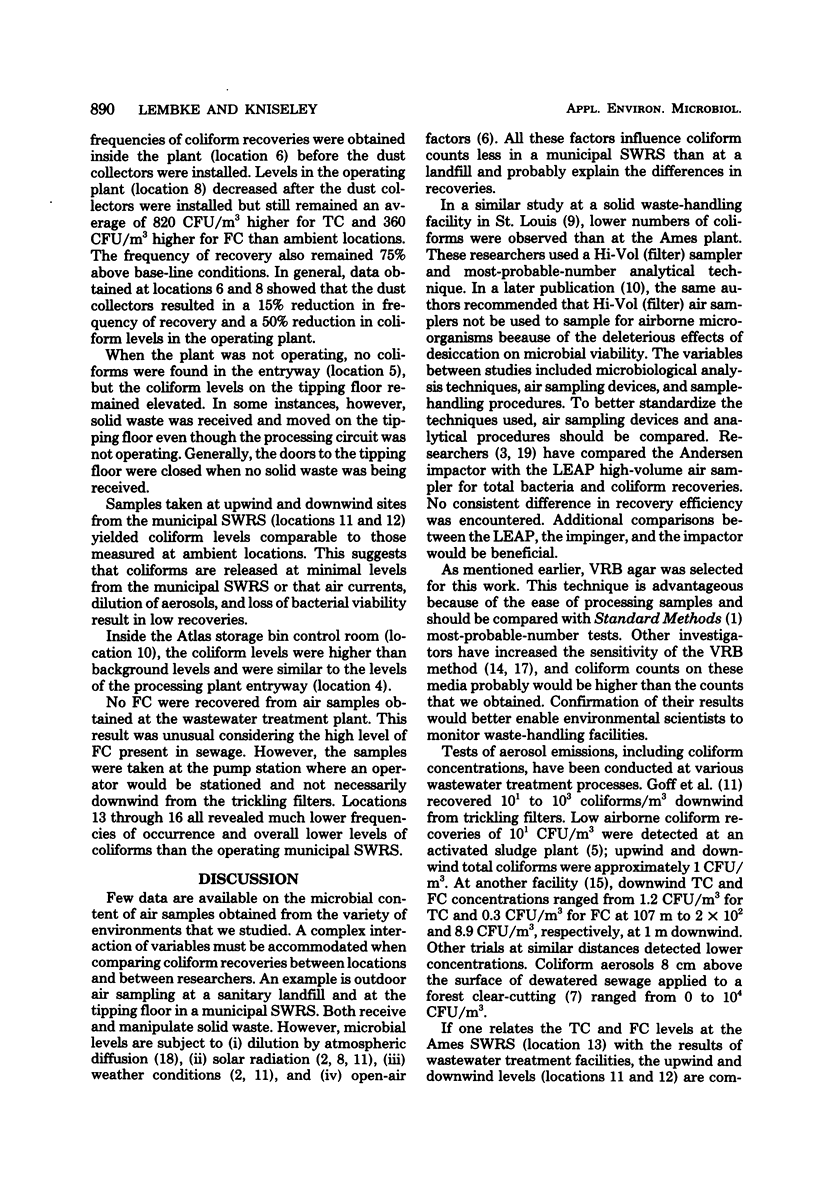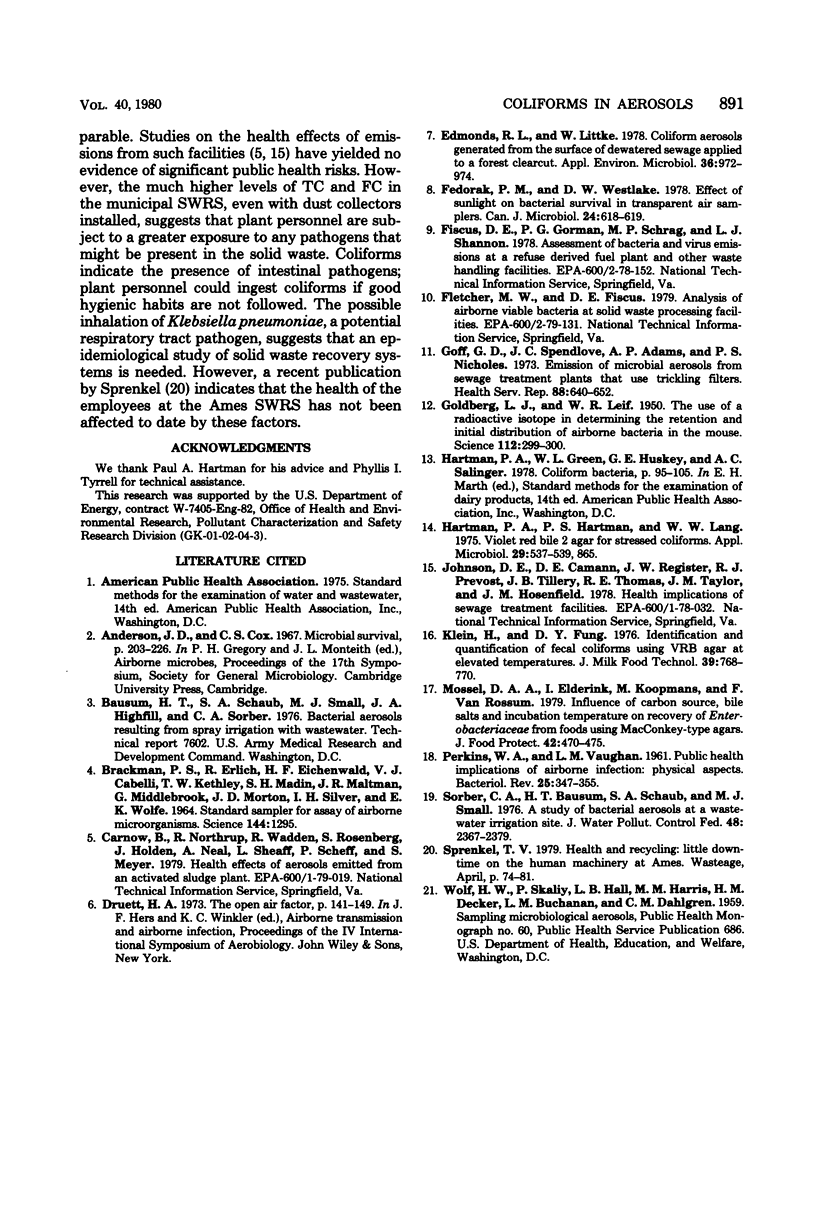Abstract
Airborne total and fecal coliform concentrations averaged 2.1 X 10(3) and 9.9 X 10(2)/m3, respectively, inside an operating solid waste recovery system. Installation of dust control equipment reduced these levels by 50%. Frequency of recovery of coliforms also dropped by 15%.
Full text
PDF



Selected References
These references are in PubMed. This may not be the complete list of references from this article.
- Edmonds R. L., Littke W. Coliform aerosols generated from the surface of dewatered sewage applied to a forest clearcut. Appl Environ Microbiol. 1978 Dec;36(6):972–974. doi: 10.1128/aem.36.6.972-974.1978. [DOI] [PMC free article] [PubMed] [Google Scholar]
- Fedorak P. M., Westlake W. S. Effect of sunlight on bacterial survival in transparent air samplers. Can J Microbiol. 1978 May;24(5):618–619. doi: 10.1139/m78-100. [DOI] [PubMed] [Google Scholar]
- GOLDBERG L. J., LEIF W. R. The use of a radioactive isotope in determining the retention and initial distribution of airborne bacteria in the mouse. Science. 1950 Sep 15;112(2907):299–300. doi: 10.1126/science.112.2907.299. [DOI] [PubMed] [Google Scholar]
- Goff G. D., Splendlove J. C., Adams A. P., Nicholes P. S. Emission of microbial aerosols from sewage treatment plants that use trickling filters. Health Serv Rep. 1973 Aug-Sep;88(7):640–652. [PMC free article] [PubMed] [Google Scholar]
- PERKINS W. A., VAUGHAN L. M. Public health implications of airborne infection: physical aspects. Bacteriol Rev. 1961 Sep;25:347–355. doi: 10.1128/br.25.3.347-355.1961. [DOI] [PMC free article] [PubMed] [Google Scholar]
- Sorber C. A., Bausum H. T., Schaub S. A., Small M. J. A study of bacterial aerosols at a wastewater irrigation site. J Water Pollut Control Fed. 1976 Oct;48(10):2367–2379. [PubMed] [Google Scholar]


